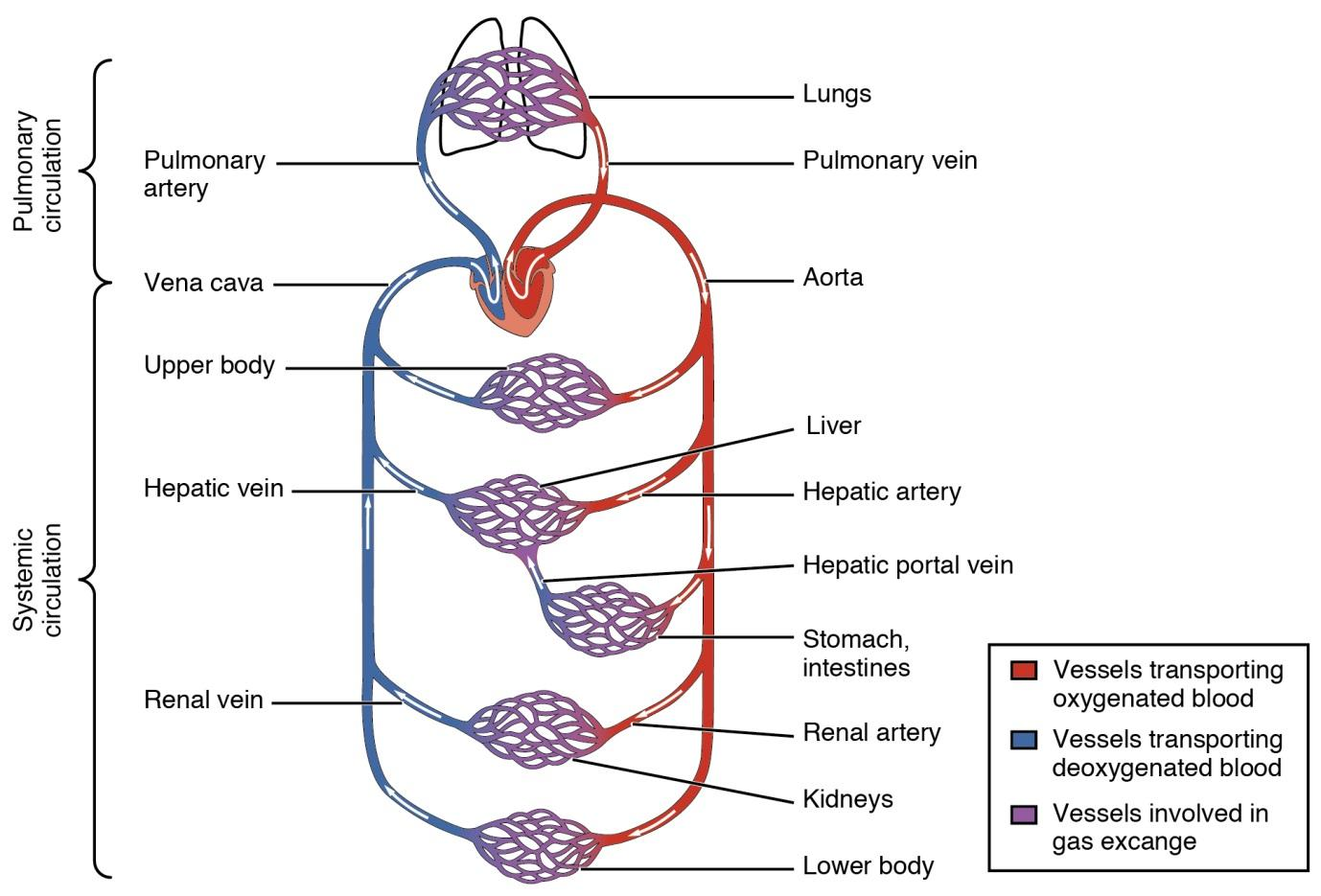
What is pulmonary circulation?
Answer
437.5k+ views
4 likes
Hint: Pulmonary circulation is the flow of blood between the heart and the lungs. Deoxygenated blood goes to the lungs and oxygenated blood returns to the heart.
Complete answer: Pulmonary circulation is the blood circulation pathway in which deoxygenated blood is moved out of the heart and sent to the lungs and then after oxygenation, blood is returned back to the heart for further systemic circulation.
Pathway: From the right atrium, the deoxygenated blood is pumped out from the right atrium into the right ventricle as the tricuspid valve opens.
This blood is then carried away from the heart by pulmonary arteries to the lungs.
In the lungs, gaseous exchange occurs (as CO2 is released and O2 is picked up) and deoxygenated blood is purified and filled with oxygen i.e. oxygenated.
After that, the pulmonary veins bring back the oxygenated blood to the left atrium of the heart.
This blood then enters the left ventricle from where it can be circulated throughout the body parts.

Note: Oxygen is taken up by haemoglobin of RBC by cooperative binding. In the lungs, the pulmonary artery further divides into very fine and thin-walled capillaries. Pulmonary arteries are the only arteries which carry deoxygenated blood and pulmonary veins are the only veins that carry oxygenated blood.
Complete answer: Pulmonary circulation is the blood circulation pathway in which deoxygenated blood is moved out of the heart and sent to the lungs and then after oxygenation, blood is returned back to the heart for further systemic circulation.
Pathway: From the right atrium, the deoxygenated blood is pumped out from the right atrium into the right ventricle as the tricuspid valve opens.
This blood is then carried away from the heart by pulmonary arteries to the lungs.
In the lungs, gaseous exchange occurs (as CO2 is released and O2 is picked up) and deoxygenated blood is purified and filled with oxygen i.e. oxygenated.
After that, the pulmonary veins bring back the oxygenated blood to the left atrium of the heart.
This blood then enters the left ventricle from where it can be circulated throughout the body parts.

Note: Oxygen is taken up by haemoglobin of RBC by cooperative binding. In the lungs, the pulmonary artery further divides into very fine and thin-walled capillaries. Pulmonary arteries are the only arteries which carry deoxygenated blood and pulmonary veins are the only veins that carry oxygenated blood.
Latest Vedantu courses for you
Grade 11 Science PCM | CBSE | SCHOOL | English
CBSE (2025-26)
School Full course for CBSE students
₹41,848 per year
Recently Updated Pages
Master Class 9 General Knowledge: Engaging Questions & Answers for Success

Master Class 9 English: Engaging Questions & Answers for Success

Master Class 9 Science: Engaging Questions & Answers for Success

Master Class 9 Social Science: Engaging Questions & Answers for Success

Master Class 9 Maths: Engaging Questions & Answers for Success

Class 9 Question and Answer - Your Ultimate Solutions Guide

Trending doubts
Where did Netaji set up the INA headquarters A Yangon class 10 social studies CBSE

A boat goes 24 km upstream and 28 km downstream in class 10 maths CBSE

Why is there a time difference of about 5 hours between class 10 social science CBSE

The British separated Burma Myanmar from India in 1935 class 10 social science CBSE

The Equation xxx + 2 is Satisfied when x is Equal to Class 10 Maths

What are the public facilities provided by the government? Also explain each facility




